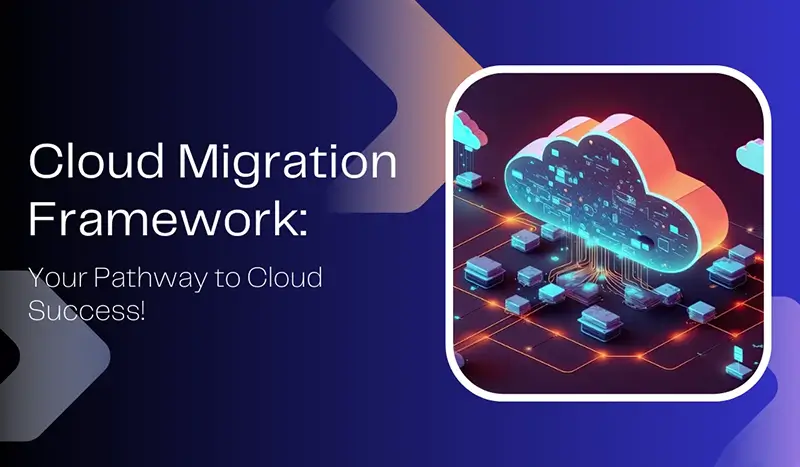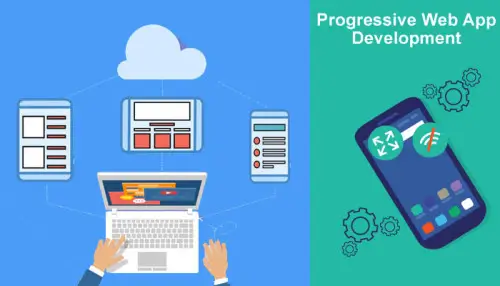Cloud migration has become a critical process for organizations seeking to harness the power of the cloud. In this digital age, the ability to leverage cloud infrastructure can significantly enhance scalability, flexibility, and cost-efficiency. However, a successful migration requires careful planning, consideration of various factors, and adherence to a proven cloud migration framework.
In this blog, we will explore the key aspects of cloud migration, including the framework, considerations, trends, types, data management, metrics, phases, and patterns. By the end, you’ll have a comprehensive understanding of the cloud migration landscape.
Cloud Migration Framework
A robust cloud migration framework is crucial for ensuring a smooth and successful transition. The framework provides a structured approach that helps organizations navigate the complexities of the migration process. While different frameworks exist, a commonly used one is the 6 Rs framework:
1. Rehosting (lift and shift): Moving applications as-is to the cloud without making significant changes.
2. Replatforming: Optimizing applications for the cloud environment while preserving core architecture.
3. Repurchasing: Replacing existing applications with third-party cloud-based alternatives.
4. Refactoring (re-architecting): Restructuring applications to leverage cloud-native features and capabilities.
5. Retiring: Phasing out applications that are no longer needed or outdated.
6. Retaining: Maintaining applications in their current on-premises environment due to specific constraints.
Cloud Migration Considerations
Before embarking on a cloud migration journey, organizations must carefully consider various factors. These considerations include:
1. Security and Compliance:
Ensuring data protection, regulatory compliance, and robust security measures in the cloud environment.
2. Cost Optimization:
Assessing the financial implications of cloud migration, including potential savings and operational costs.
3. Scalability and Flexibility:
Evaluating the ability to scale resources on-demand and adapt to changing business needs.
4. Vendor Selection:
Choosing the right cloud service provider that aligns with the organization’s requirements and objectives.
5. Skills and Training:
Addressing any skill gaps within the organization and providing training to effectively manage the cloud infrastructure.
Cloud Migration Trends
To stay ahead in the dynamic cloud landscape, it is essential to be aware of emerging trends. Some notable trends in cloud migration include:
1. Multi-Cloud Approach:
Leveraging multiple cloud providers to distribute workloads and mitigate vendor lock-in risks.
2. Serverless Computing:
Adopting serverless architectures to eliminate the need for infrastructure management and reduce costs.
3. Edge Computing:
Extending cloud capabilities to the network edge to improve performance and latency for critical applications.
4. Containers and Kubernetes:
Utilizing containerization and container orchestration tools like Kubernetes for easier application deployment and management.
5. AI and Machine Learning Integration:
Integrating AI and machine learning capabilities to enhance cloud-based applications and services.
Cloud Migration Types
Cloud migration can be categorized into three primary types:
1. Public Cloud:
Moving applications and data to a public cloud infrastructure provided by third-party vendors such as Amazon Web Services (AWS), Microsoft Azure, or Google Cloud Platform (GCP).
2. Private Cloud:
Migrating applications and data to a cloud infrastructure dedicated exclusively to an organization, either on-premises or hosted by a third-party provider.
3. Hybrid Cloud:
Combining both public and private cloud environments, allowing organizations to leverage the benefits of each based on specific requirements.
Cloud Migration Data
Data plays a critical role in cloud migration, and effective management is essential for success. Considerations regarding data include:
Data Assessment: Identifying and categorizing data based on its sensitivity, regulatory requirements, and business value.
1. Data Transfer:
Determining the most efficient and secure method to transfer data to the cloud, such as direct migration, online transfers, or physical shipment.
2. Data Governance:
Establishing policies and controls for data access, retention, and protection to ensure compliance and data integrity.
3. Data Backup and Recovery:
Implementing robust backup and disaster recovery strategies to safeguard against data loss or system failures.
4. Data Integration:
Ensuring seamless integration between cloud-based data and existing on-premises systems for uninterrupted business operations.
Cloud Migration Metrics
Measuring the success of a cloud migration requires relevant metrics to assess performance and outcomes. Key metrics include:
1. Downtime: Measuring the time applications or services are unavailable during the migration process.
2. Performance: Monitoring application response times and throughput before and after migration to assess improvements.
3. Cost Savings: Evaluating the financial benefits achieved through reduced infrastructure costs and increased operational efficiency.
4. Scalability: Assessing the organization’s ability to scale resources up or down rapidly in response to workload fluctuations.
5. Security and Compliance: Tracking adherence to security standards and compliance requirements during and after migration.
Cloud Migration Phases
A typical cloud migration follows a phased approach, ensuring a methodical and controlled transition:
1. Planning: Defining the migration strategy, goals, and resource requirements while identifying potential risks and challenges.
2. Assessment: Analysing existing applications and infrastructure to determine their suitability for migration and establishing migration priorities.
3. Design and Architecture: Creating a detailed plan for the cloud environment, including network architecture, data storage, and security.
4. Migration: Executing the migration plan, which may involve rehosting, replatforming, refactoring, or other migration types.
5. Testing: Verifying the functionality, performance, and security of applications and services in the cloud environment.
6. Optimization: Fine-tuning the cloud infrastructure, optimizing costs, and addressing any performance bottlenecks.
7. Operations and Maintenance: Establishing ongoing management and maintenance processes to ensure the cloud environment’s stability and security.
Cloud Migration Patterns
Cloud migration patterns provide proven approaches to address specific migration scenarios and challenges. Some common patterns include:
1. Lift and Shift:
Migrating applications without making significant changes to the existing architecture, aiming for a quick and straightforward migration.
2. Parallel Adoption:
Running applications in both the on-premises and cloud environments simultaneously to ensure a smooth transition and minimize disruption.
3. Hybrid Architecture:
Combining on-premises infrastructure with cloud resources to gradually migrate applications and data while maintaining critical services on-premises.
4. DevOps Enablement:
Integrating DevOps practices into the migration process to automate deployments, ensure quality, and enhance collaboration.
5. Big Bang Migration:
Migrating all applications and data simultaneously to the cloud, suitable for organizations with well-defined requirements and tight timelines.
Conclusion
Cloud migration is a complex undertaking that requires careful planning, consideration of various factors, and adherence to proven frameworks and best practices. By understanding the cloud migration framework, considerations, trends, types, data management, metrics, phases, and patterns, organizations can successfully navigate the cloud migration journey. The power of the cloud, when harnessed effectively, enables scalability, flexibility, and cost-efficiency, propelling organizations towards a more agile and innovative future. Embracing the cloud and its possibilities has become a necessity in today’s rapidly evolving digital landscape.
At OdiTek, we offer tailored solutions to seamlessly transition your business to the cloud. With expertise in cloud migration frameworks and best practices, we ensure a smooth and efficient process, enabling scalability, security, and cost optimization for your organization’s success.







